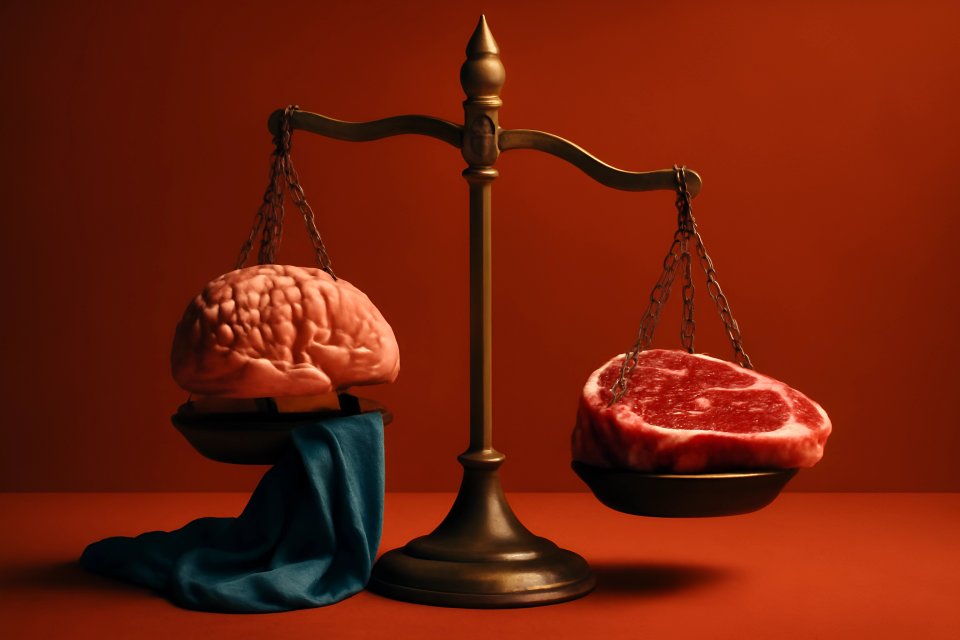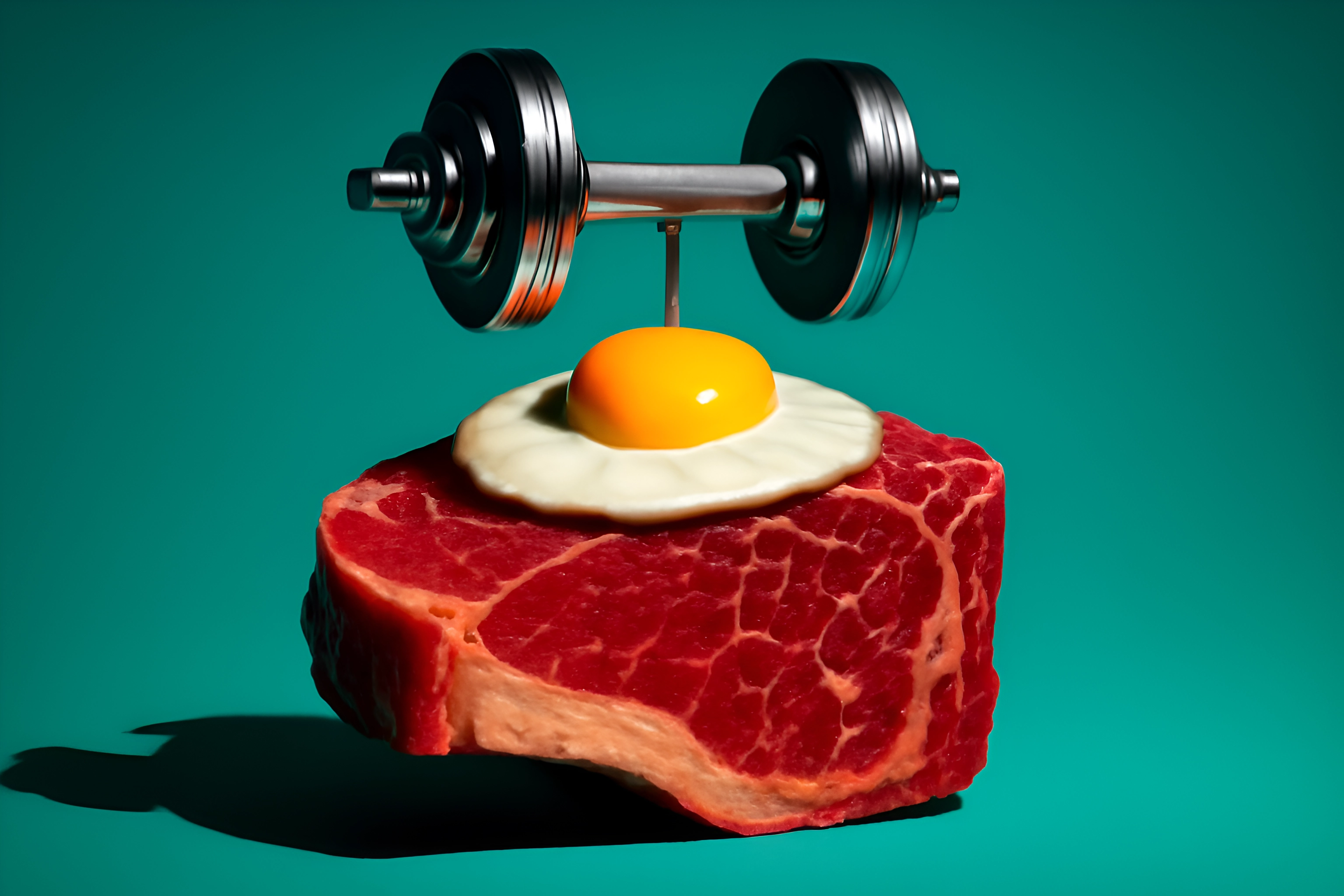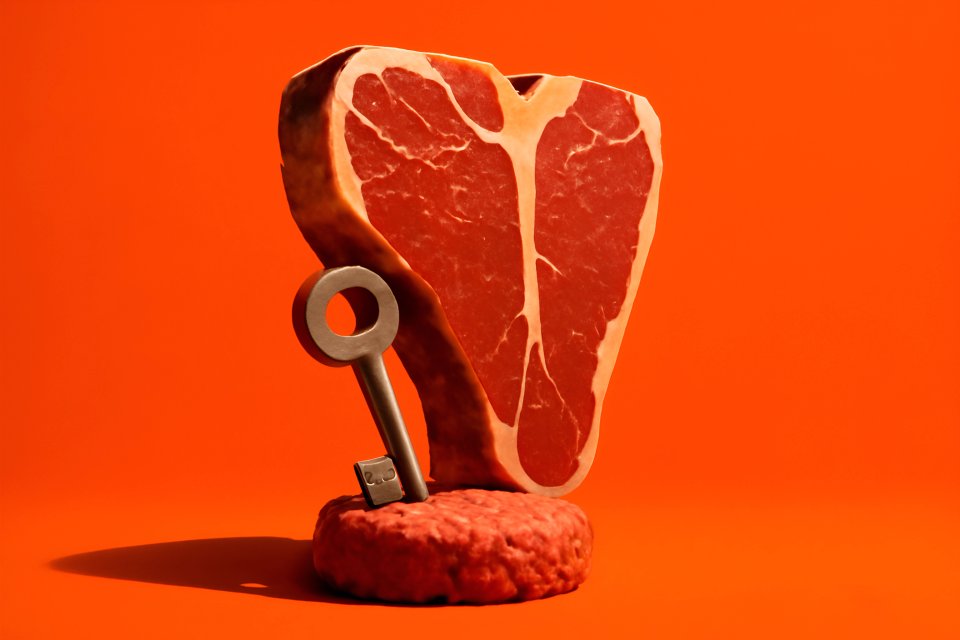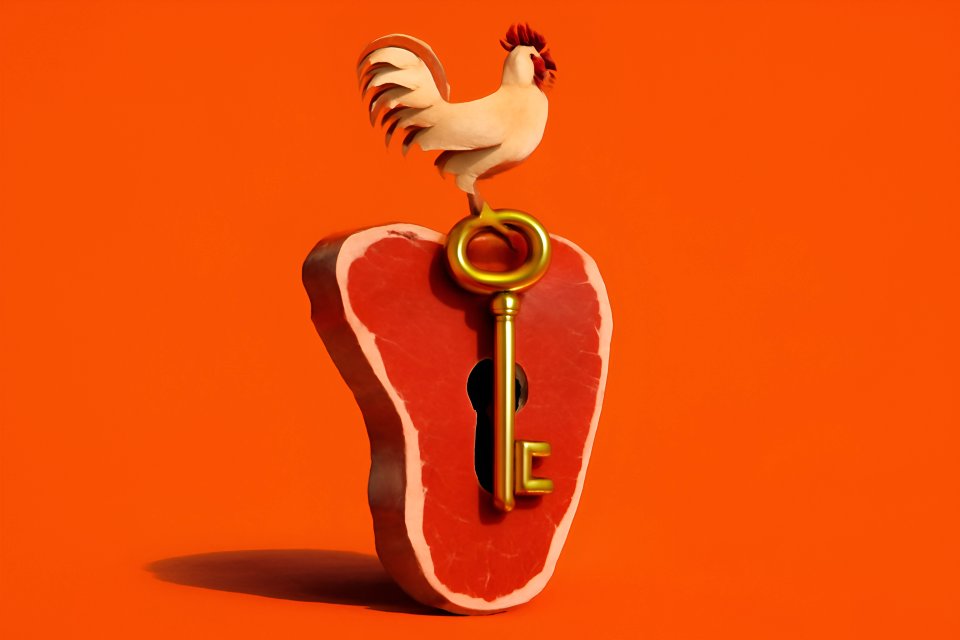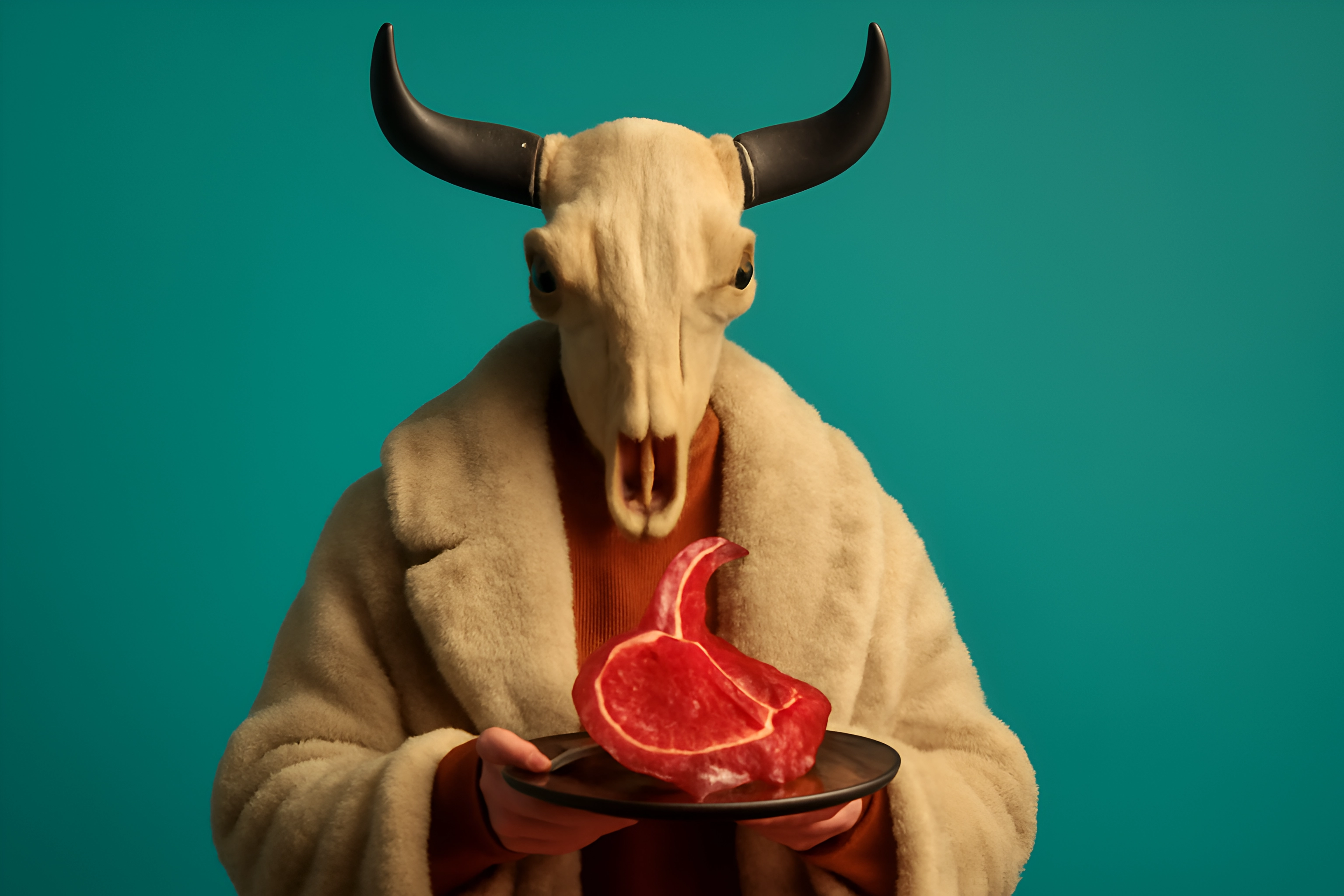
By HealingCarnivore Team
Feeling lost in a sea of conflicting nutrition advice? You’re not alone. One expert tells you to eat more plants, another to avoid fat, and the latest trend promises a quick fix that fizzles out in weeks. But what if the answer isn’t in the latest fad, but in our most ancient history?
The modern carnivore diet isn't a new invention; it's a powerful return to our biological roots. This is about tapping into a deep, primal wisdom encoded in your very DNA. This post will explore the ancestral connection and reveal how traditional carnivore eating provides a profound blueprint for modern healing.
We will uncover the what, why, and how of this evolutionary way of eating. Forget the noise and confusion. It's time to translate the wisdom of our ancestors into simple, actionable steps to reclaim your health and vitality today.
Debunking the Myth of the "Balanced" Prehistoric Diet
Let’s be brutally honest: the modern food pyramid is a lie. It’s a modern invention that has no bearing on the diet that fueled human evolution for nearly two million years. The idea that our ancestors sat around munching on a "balanced" plate of grains, fruits, and a small side of lean meat is a fantasy, and the science proves it.
Archaeological and anthropological evidence paints a very different picture—one of a hyper-carnivorous, fat-fueled existence. A groundbreaking study from Tel Aviv University, analyzing hundreds of sources, concluded that humans were apex predators who ate mostly meat for two million years, with our genetics and physiology adapting specifically for this purpose. This wasn't a diet of convenience; it was a diet of specialization, a key driver of our evolution from early hominins to the humans we are today.
The evidence is written in our bones and our biology. Stable isotope analysis of prehistoric remains consistently points to a diet high in meat from large animals. Our stomach acidity is higher than that of most carnivores, perfectly designed to kill pathogens in raw meat, and our fat cells are small and numerous, ideal for storing and burning fat between successful hunts—a clear sign of the traditional carnivore diet practices that shaped us.
The Three Pillars of Ancestral Eating
Our ancestors understood a truth we've forgotten: the whole animal provides whole-body nourishment. It wasn't just about the steak. The real prize was in the organs, the connective tissue, and the rich bone marrow, which provided a symphony of nutrients that muscle meat alone cannot match. This nose-to-tail approach delivered unparalleled nutrient density, supplying critical compounds like glycine for tissue repair, choline for brain health, and a treasure trove of fat-soluble vitamins A, D, E, and K.
Life for our ancestors was also defined by the natural rhythm of feast and famine. Food wasn't available 24/7 from a brightly lit pantry. Successful hunts led to periods of feasting, followed by periods of scarcity that triggered powerful biological processes. This cycle promoted incredible metabolic flexibility and initiated cellular cleanup, a process known as autophagy, where the body recycles old, damaged cells to make way for new, healthy ones.
Above all, our ancestors revered animal fat. Fat, not carbohydrates, was the most prized and essential energy source, fueling the rapid expansion of the human brain and ensuring survival in harsh environments. The relentless pursuit of fat is why early humans developed tools to smash open bones for marrow and why they prioritized fatty organs over lean muscle. This primal drive for fat is a core component of our genetic heritage, a key to unlocking sustained energy, hormonal balance, and profound satiety.
Connecting the Past to Present-Day Physiology
Why does this ancient way of eating work so powerfully today? Because our bodies haven't changed. We are still operating with the same genetic software as our Paleolithic ancestors, a system finely tuned for animal-based nutrition. This is the core of modern healing with ancestral nutrition: aligning our modern lives with our ancient biology.
The physiological evidence is undeniable. Our high stomach acidity, our unique fat storage system, and our genetic predisposition to thrive on fat are all remnants of our hyper-carnivorous past. When we ignore this blueprint and fuel our bodies with processed carbohydrates and plant-based foods we were never designed to digest in large quantities, the result is modern disease: metabolic syndrome, autoimmune disorders, and chronic inflammation.
This is why returning to an ancestral way of eating creates such rapid and profound transformations. It’s not a miracle; it’s a homecoming. By giving your body the species-appropriate fuel it recognizes, you are simply removing the obstacles and allowing its innate healing intelligence to take over.
How Nose-to-Tail Heals the Modern Body
The modern diet has left us overfed but undernourished, riddled with deficiencies that a nose-to-tail approach corrects with stunning efficiency. Liver, for instance, is nature's most potent multivitamin. A single 3.5-ounce serving of beef liver provides over 1,000% of the RDI for Vitamin B12 and over 600% for Vitamin A, nutrients essential for energy, immunity, and vision.
Meanwhile, the collagen and gelatin found in bone broth, skin, and connective tissues are the building blocks for a healthy gut. These compounds help seal a leaky gut, a primary driver of inflammation and autoimmune issues. For those struggling with skin conditions, the benefits are equally profound; the glycine and proline in collagen are essential for rebuilding healthy skin tissue, which is why so many people find that healing acne and eczema becomes possible when they adopt this way of eating.
This isn't just about adding a few nutrients; it's about providing a complete matrix of vitamins, minerals, and amino acids in their most bioavailable forms. This synergy is what allows the body to repair joints, strengthen bones, and calm the inflammatory storms that plague modern health.
The Metabolic Reset of Feasting Cycles
The constant grazing promoted by modern dietary advice has wrecked our metabolic health, leading to widespread insulin resistance. The ancestral pattern of feasting and fasting acts as a powerful reset button. By simply eating when hungry and stopping when full—often resulting in two meals a day or even one—you give your body a break from the constant work of digestion and insulin production.
This break allows your body to switch its fuel source from glucose to fat, tapping into your stored body fat for clean, sustained energy. This metabolic switch improves insulin sensitivity, reduces inflammation, and enhances mental clarity by providing the brain with a steady supply of ketones. You escape the exhausting rollercoaster of blood sugar spikes and crashes that define a high-carb diet.
This isn't about forced starvation or dogmatic fasting rules. It's about listening to your body's natural signals of hunger and satiety, a skill we've lost in a world of hyper-palatable, always-available food. Reclaiming this rhythm is a fundamental step in reversing modern metabolic dysfunction.
Why Eliminating Plants Was a Feature, Not a Bug
Here’s a truth that challenges everything we’ve been taught: for many people, eliminating plants is a critical step toward healing. Plants are not benign; they have sophisticated chemical defense systems to protect themselves from being eaten. These defenses include anti-nutrients like lectins, oxalates, and phytates, which can wreak havoc on the human gut.
These compounds can bind to minerals, preventing their absorption, and irritate the gut lining, contributing to leaky gut and triggering autoimmune responses. For individuals with compromised digestive systems or autoimmune conditions, these plant toxins are like pouring gasoline on a fire. By removing them, you give your gut and immune system the space they finally need to heal.
Many people worry about the lack of fiber, but this concern is often misplaced. As you'll find when debunking common carnivore diet myths, a well-formulated animal-based diet can resolve digestive issues like bloating, gas, and constipation by removing these inflammatory triggers.
How to Eat Like an Ancestor (Without a Time Machine)
Adopting this way of eating is simpler than you think. It’s not about rigid rules but about returning to powerful, time-tested principles. The goal is to build a sustainable lifestyle that nourishes you from the inside out, freeing you from the confusion and dogma of modern nutrition.
This approach stands in stark contrast to other diets that might seem similar on the surface. Understanding the differences between a true ancestral approach and other low-carb diets is key to unlocking its full potential. A deep dive into a comparative analysis of the carnivore diet vs. other low-carb diets can clarify why this species-appropriate framework is uniquely effective for resolving chronic disease.
The journey starts with a simple commitment: prioritize nutrient-dense animal foods and listen to your body. Forget calorie counting and complex meal plans. Your ancestral toolkit is built on simplicity, satiety, and biological alignment.
Principle #1: Embrace Nose-to-Tail Eating
You don't need to eat eyeballs to be ancestral. Start small and make it easy. The simplest first step is to incorporate high-quality bone broth into your daily routine to support gut health and provide essential minerals.
Next, introduce liver. If the taste is strong for you, start with a chicken liver pâté or ask your butcher to grind a small amount of beef liver into your ground beef. Aim for just a few ounces once or twice a week to reap its incredible nutritional benefits.
Don't be afraid to try other organs. Beef heart is surprisingly mild and tastes very similar to steak, making it an easy entry point. By gradually incorporating these nutrient-dense foods, you provide your body with the full spectrum of nutrients it needs to thrive.
Principle #2: Prioritize Fat for Fuel and Satiety
Stop fearing fat. Animal fat is the key to energy, satiety, and hormonal health. The goal is to get the majority of your calories from fat, not protein, which mimics the composition of the animals our ancestors prized.
Choose fattier cuts of meat like ribeye, chuck roast, and 80/20 ground beef. Cook your food in tallow, butter, or ghee instead of industrial seed oils. If you eat a leaner cut like sirloin, don't be afraid to add a generous pat of butter or a spoonful of tallow on top.
This is the secret to staying full and energized for hours, eliminating cravings and the need for constant snacking. When you are properly fat-fueled, your body has a steady, reliable energy source that keeps you sharp, focused, and satisfied.
Principle #3: Listen to Your Body's Natural Hunger Cues
Throw the clock away. The modern idea of eating three square meals a day, plus snacks, is a cultural construct, not a biological necessity. The most powerful way to honor the feast/famine cycle is to simply eat when you are genuinely hungry and stop when you are comfortably full.
For most people on a carnivore diet, this naturally leads to eating two meals a day, or sometimes even one. This isn't forced fasting; it's the natural result of eating nutrient-dense, satiating food. You are no longer a slave to cravings and blood sugar crashes.
This principle is about rebuilding trust with your body. It knows what it needs. Your only job is to listen and provide it with the right fuel.
More Than Food: Reclaiming Your Primal Mind
The transformation that occurs on an ancestral diet goes far beyond the physical. When you fuel your brain with the clean energy of ketones and provide it with the essential fatty acids and B vitamins it craves, the result is a profound sense of mental clarity and emotional stability. The brain fog lifts, anxiety often lessens, and a calm, focused energy takes its place.
This way of eating is also an act of radical simplification. By reducing your food choices to a simple, nourishing template, you eliminate decision fatigue. You free up immense mental energy that was once spent worrying about what, when, and how much to eat.
Ultimately, this is an act of empowerment. You are rejecting a broken system and reclaiming a biological heritage of strength, resilience, and vitality. You are connecting with a lineage of survivors and honoring the deep wisdom that is your birthright.
The Path Forward is the Path Back
The incredible effectiveness of the carnivore diet is not magic. It is biology. Its power is rooted in the ancestral connection, a deep alignment between our modern bodies and our ancient genetic blueprint.
By adopting traditional carnivore eating practices—embracing nose-to-tail nourishment, prioritizing fat, and listening to our body's natural rhythms—we are giving our bodies the tools they have been missing. We are removing the inflammatory triggers and nutrient deficiencies that drive modern disease. Radical simplicity leads to radical transformation. Your body knows how to heal; you just have to give it the right tools.
Your healing journey isn't a departure from the norm; it's a return home.
Ready to start your own healing journey? Download our free Carnivore Diet Quick-Start Guide to get the essential first steps.
What's one ancestral practice you've incorporated into your life? Share your experience in the comments below!
